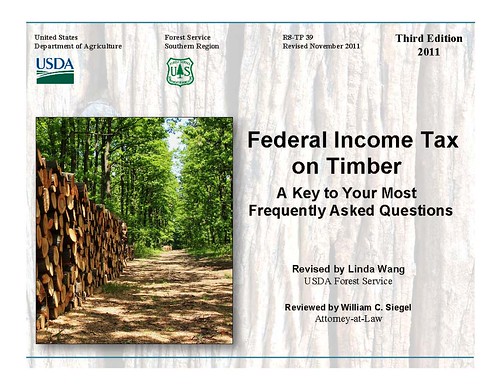
The Forest Service recently released the 2011 edition of Federal Income Tax on Timber: A Key to Your Most Frequently Asked Questions, a quick-reference guide to timber tax laws impacting woodland owners.
Since the first income tax Form 1040 appeared in 1913, many timber tax provisions have been added to encourage management and stewardship of private woodland. More recently, sweeping tax law changes have included major provision important to woodland owners. These include the temporary extension of the favorable tax rate applicable to timber, generous depreciation deduction, as well as the brand new tax form required by the IRS affecting timber sale reporting.
For more than 20 years the National Woodland Owner Survey has indicated that taxes are a top concern for private woodland owners and are major costs, yet many tax professionals do not specialize in timber tax. Federal Income Tax on Timber, complete with a current update of the new tax law changes, provides timely tax reporting information for woodland owners and their advisors. It's written in plain easy-to-understand language and includes examples.
Some of the questions that are answered in the 2011 edition of Federal Income Tax on Timber are:
Does my timber sale qualify for the favorable capital gain rate?
How do I claim a loss on my return for timber damaged by fire or storms?
How do I qualify for capital gains for the cutting of standing timber?
Click here to register for the next Forest Service timber tax webinar on Feb. 22.
